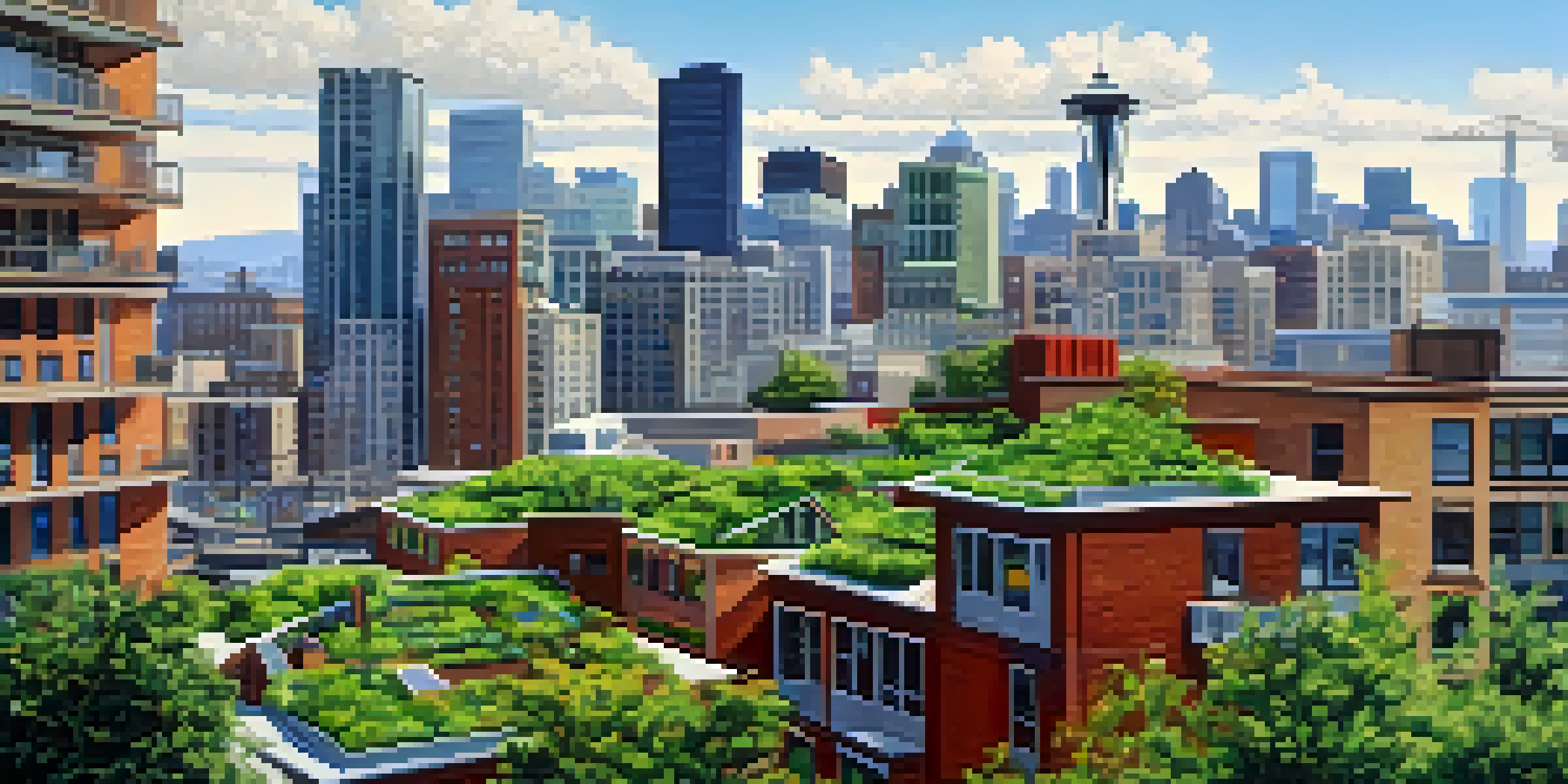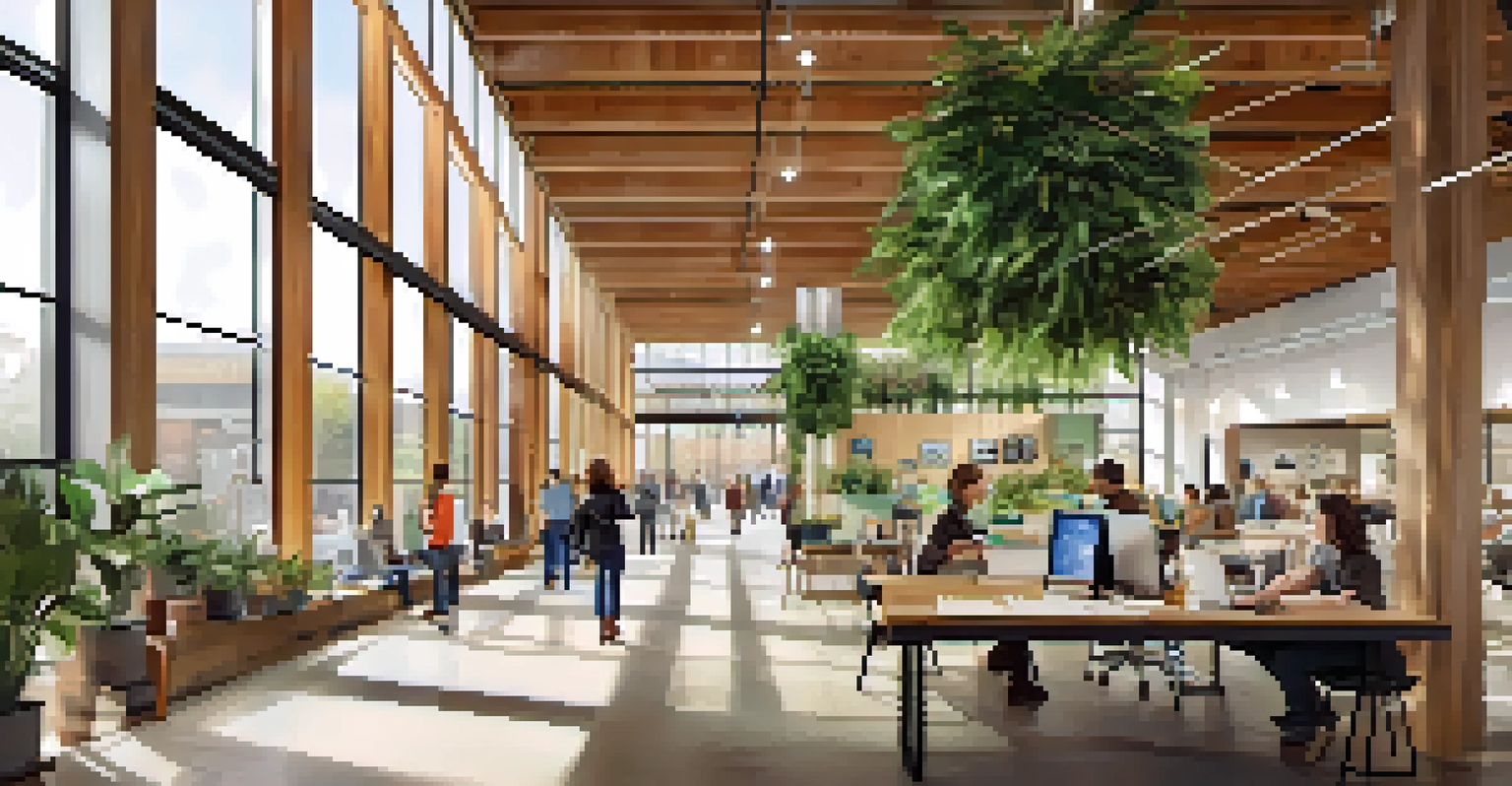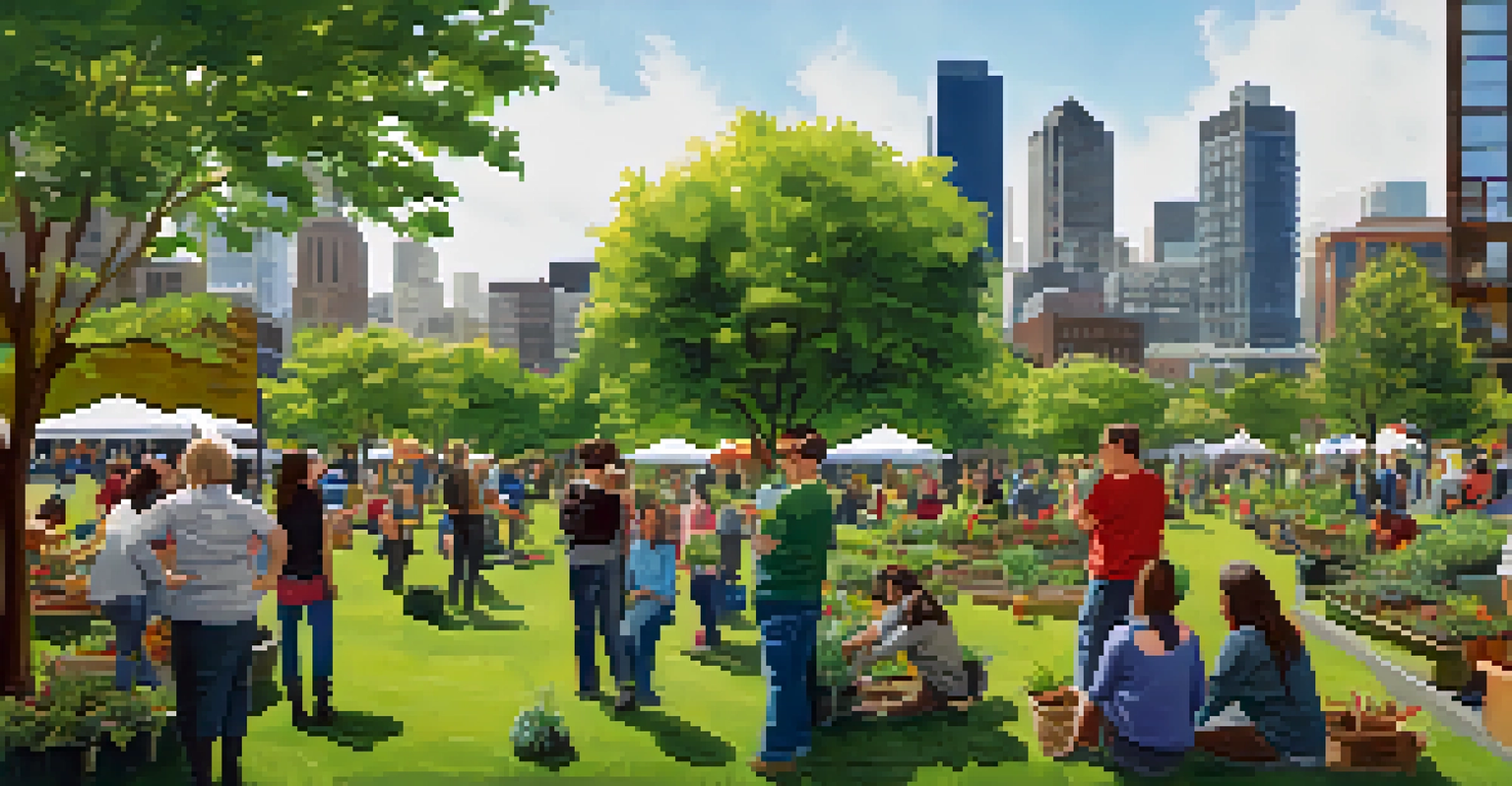Seattle's Green Building Practices: A Model for Sustainability

An Overview of Seattle's Commitment to Green Building
Seattle has long been at the forefront of sustainability, with green building practices deeply embedded in its urban planning. The city aims to create a healthy environment for its residents while reducing its carbon footprint. This commitment is reflected in various initiatives, policies, and community involvement that prioritize eco-friendly construction and renovation.
Sustainability is no longer about doing less harm. It's about doing more good.
One of the key elements of Seattle's approach is the Seattle Green Building Initiative, which encourages developers to incorporate sustainable practices into their projects. By focusing on energy efficiency, water conservation, and sustainable materials, this initiative sets a high standard for new constructions. The result is a vibrant city that not only looks good but operates sustainably.
As a model for other cities, Seattle’s green building practices demonstrate that sustainability can go hand-in-hand with economic development. The city showcases how environmentally friendly construction not only benefits the planet but also enhances the quality of life for its inhabitants.
The Role of LEED Certification in Seattle
Leadership in Energy and Environmental Design (LEED) is a globally recognized certification system that evaluates the sustainability of buildings. In Seattle, many developers pursue LEED certification as a testament to their commitment to environmentally responsible construction. This certification not only elevates the building's status but also attracts eco-conscious residents and businesses.

A prime example is the Bullitt Center, often dubbed the 'greenest commercial building in the world.' This building has achieved the highest level of LEED certification and serves as a living laboratory for sustainable practices. Its design incorporates solar energy, rainwater harvesting, and natural ventilation, setting a benchmark for future projects.
Seattle Leads in Green Building
The city's commitment to sustainable practices is reflected in its innovative building initiatives that enhance both environmental health and urban quality of life.
The push for LEED-certified buildings in Seattle has fostered a culture of innovation and accountability in the construction industry. As more buildings achieve this certification, the city's skyline becomes a testament to its sustainable aspirations.
Integrating Nature Through Biophilic Design
Biophilic design is the practice of incorporating natural elements into building architecture, promoting a strong connection between people and nature. Seattle's green buildings often feature green roofs, living walls, and extensive landscaping that enhance both aesthetic appeal and environmental benefits. This approach not only beautifies the city but also improves air quality and reduces urban heat.
The future will be green, or not at all.
An excellent illustration of biophilic design can be found in the Amazon Spheres, which combine workspaces with lush greenery. These structures create an inviting environment that fosters creativity and well-being among employees. Such integration of nature into the built environment is increasingly recognized as vital for mental health and productivity.
By prioritizing biophilic design, Seattle sets an example for how urban areas can harmoniously coexist with nature. This shift toward more organic architecture invites residents to appreciate the beauty of their surroundings while contributing to ecosystem health.
Energy Efficiency: A Core Component of Green Building
Energy efficiency is a cornerstone of Seattle's green building practices. Many new constructions utilize advanced technologies such as energy-efficient lighting, HVAC systems, and smart building management systems that optimize energy use. This not only reduces operational costs but also lessens the environmental impact of buildings.
For instance, the Seattle City Hall is designed to minimize energy consumption while maximizing comfort for its occupants. The building features a highly efficient heating and cooling system that adapts to real-time conditions, ensuring energy is used wisely. Such innovations demonstrate how modern architecture can address climate challenges effectively.
LEED Certification Drives Innovation
Many developers in Seattle pursue LEED certification, showcasing their dedication to eco-friendly construction and attracting like-minded residents and businesses.
By prioritizing energy efficiency, Seattle's buildings not only contribute to the city's sustainability goals but also serve as a model for energy-conscious design. This focus on efficiency is becoming increasingly vital as cities seek to combat climate change and reduce reliance on fossil fuels.
Sustainable Materials: Reducing Environmental Impact
The use of sustainable materials is another key aspect of Seattle's green building practices. Builders are increasingly opting for recycled, reclaimed, and locally sourced materials that have a lower environmental impact. This shift not only reduces waste but also supports local economies and promotes responsible sourcing.
One notable example is the use of reclaimed wood in construction projects throughout the city. By repurposing materials that would otherwise end up in landfills, builders can create unique, character-rich spaces while minimizing their ecological footprint. This practice emphasizes creativity and sustainability in the building process.
As Seattle continues to embrace sustainable materials, it sets a precedent for other cities to follow. This approach highlights how thoughtful material choices can contribute to both environmental stewardship and architectural innovation.
Community Engagement: Involving Residents in Sustainability
Community engagement plays a crucial role in Seattle's green building initiatives. The city actively involves residents in discussions about sustainable development, ensuring that their voices are heard in the planning process. This collaborative approach fosters a sense of ownership and responsibility among community members.
Programs like the Seattle Sustainability Challenge encourage residents to adopt eco-friendly practices in their own homes and neighborhoods. These initiatives empower individuals to make a difference, whether through energy conservation, composting, or supporting local green businesses. Such grassroots efforts complement larger building projects and amplify the impact of sustainability.
Community Engagement Fuels Sustainability
Active resident involvement in sustainability initiatives fosters a culture of environmental consciousness and enhances the city's resilience.
By engaging the community in sustainability efforts, Seattle is cultivating a culture of environmental consciousness. This collective commitment to green practices enhances the city's overall resilience and fosters a stronger sense of community.
The Future of Green Building in Seattle
Looking ahead, Seattle is poised to continue its leadership in green building practices. As climate change becomes an increasingly pressing issue, the city is committed to exploring new technologies and strategies that enhance sustainability. This forward-thinking mindset ensures that Seattle remains a model for eco-friendly urban development.
Emerging trends, such as net-zero buildings and innovative waste management systems, are already on the horizon. By prioritizing these advancements, Seattle aims to further reduce its carbon footprint and promote a circular economy. This proactive approach not only benefits the environment but also sets the stage for future generations.

As other cities observe Seattle's progress, there's potential for a ripple effect in sustainable building practices across the globe. Seattle's commitment to innovation, collaboration, and community engagement serves as an inspiring example of what can be achieved in the pursuit of a greener future.